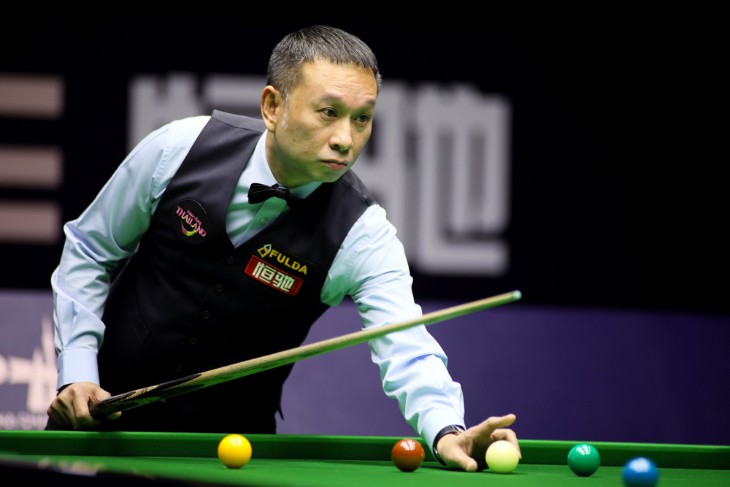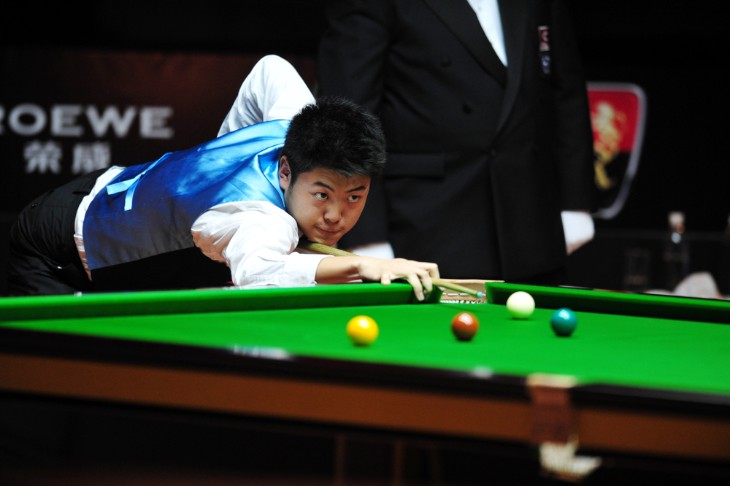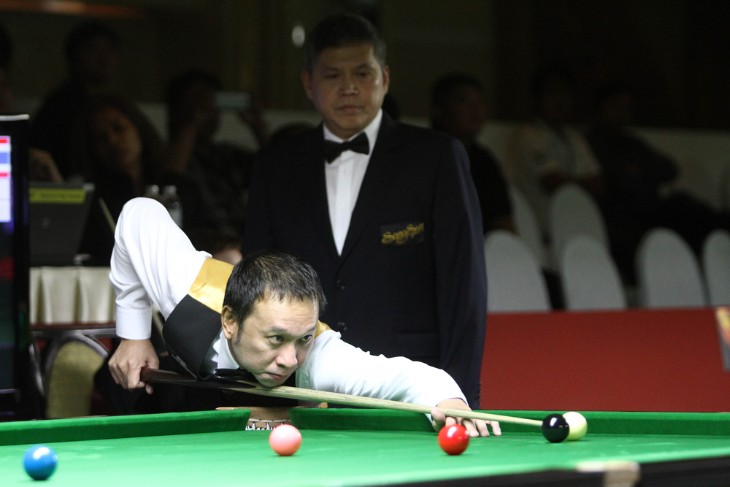- The Fundamentals of Snooker: More Than Just a Game
- Spin in Snooker: A Whirl of Physics
- The Physics of English in Snooker
- Harnessing the Power of Spin and English in Snooker: A Tactical Advantage
- The Impact of Table Conditions on Spin and English
- The Art of Cue Ball Control: Beyond Spin and English
- Advanced Techniques: Pushing the Boundaries of Snooker Physics
- The Psychological Element: How Understanding Physics Enhances Mental Game
- Historical Evolution of Spin and English Techniques in Snooker
- Final Verdict
Snooker, a game of precision and skill, transcends mere physical activity, becoming an art form in itself. The game's intricacies, particularly the concepts of spin and English, are not just about hitting balls with a stick; they embody complex physics principles.
This article delves into the fascinating world of snooker, unpacking the physics behind each shot and how understanding these principles can elevate a player's game.
The Fundamentals of Snooker: More Than Just a Game
Snooker is a popular game that involves skill, strategy, and a bit of science. It's played on a large, green table with pockets in each corner and the middle of the long sides. The aim is to use a long stick, called a cue, to hit coloured balls into these pockets.
At the start of a game, the balls are set up in a specific pattern. The main ball, called the cue ball, is white. Players take turns using the cue ball to hit other balls, called object balls, into the pockets. Each coloured ball has a different point value. The player who scores the most points wins.
The game demands not just good aim, but also careful planning. Good players think several shots ahead. They try to hit the cue ball in such a way that it ends up in a good position for the next shot. This is where the game gets interesting.
To move the cue ball around the table, players use different techniques. They can hit the ball harder or softer, change the angle of their cue, or hit the cue ball at different spots. Hitting the ball in different spots can make it spin in various ways. This spin can change how the cue ball moves after it hits an object ball or bounces off a table edge. Mastering this spin is a big part of becoming a great snooker player.
Snooker is more than just hitting balls into pockets. It's about thinking ahead, using the right techniques, and understanding how the balls move on the table. It's a game that mixes physical skill with smart strategy and a touch of physics.
Spin in Snooker: A Whirl of Physics
Spin is a key part of snooker. It's about making the cue ball rotate in different ways. This can change how the ball moves and interacts with other balls. There are three main types of spin: top spin, backspin, and side spin.
Top Spin: Driving Forward
Top spin happens when a player hits the cue ball above its centre. This makes the ball roll forward faster after it hits another ball. Imagine rolling a ball on the ground. If you push the top part of the ball, it rolls away from you. That's like top spin in snooker. It's used to move the cue ball around the table after hitting an object ball.
Back Spin: The Art of Pulling Back
Backspin is the opposite. It's when the player hits the cue ball below its centre. This makes the ball spin backwards. After it hits another ball, it can come back towards the player. It's like pulling a ball towards you on a string. This spin is tricky but useful for getting the cue ball out of tight spots or setting up for the next shot.
Side Spin: The Twist of English
Side spin, or English, is when the cue ball is hit on one of its sides. This makes it spin sideways. It can make the cue ball curve or change direction after hitting the cushions on the side of the table. It's like throwing a ball in a way that it curves in the air. This spin is great for avoiding other balls and getting the cue ball into just the right spot.
Spin in snooker is all about control. Players use spin to move the cue ball exactly where they want it. It takes practice, but getting good at using spin can improve your game. It's a mix of physics, skill, and a bit of magic that makes snooker so exciting.

The Physics of English in Snooker
English, or side spin, is a special way to hit the cue ball in snooker. It's about hitting the ball on its side, making it spin left or right. This spin changes how the ball moves after hitting other balls or the table's edges.
The Effect of Side Spin
When you use English, the ball doesn't go straight. It can curve or bounce off the cushions at different angles. Think of it like a car taking a sharp turn. The way the car moves depends on how sharply you turn the wheel. In snooker, the way you hit the ball changes its path. This can help you avoid other balls or position the cue ball for your next shot.
Controlling the Cue Ball
Using English takes skill. You have to hit the ball just right to get the spin you want. Good players can make the ball spin and move in very precise ways. It's like steering a remote-controlled car. You need to know exactly how to move it to where you want to go.
Mastering Spin and English: The Key to Snooker Excellence
Getting good at using spin and English is a big part of becoming a great snooker player. It's not just about hitting balls into pockets. It's about controlling the cue ball and setting up your next shot.
Practice Makes Perfect
Learning to use Spin and English takes lots of practice. At first, it might not work the way you want. But with time, you'll get a feel for how to hit the ball. You'll start to understand how different spins affect the ball's movement.
Strategic Thinking
Using spin and English is also about thinking ahead. You have to plan where you want the cue ball to go. Sometimes, you're setting up for a shot two or three moves ahead. Good players are always thinking about their next move.
Harnessing the Power of Spin and English in Snooker: A Tactical Advantage
Using spin and English well in snooker gives players a big advantage. It's like having extra tools in a toolbox. These skills let players make shots that are tricky and surprise their opponents.
Predicting the Ball's Path
The first step to using spin and English effectively is understanding how they affect the ball. When you know how the ball will move, you can plan better. It's like knowing the roads on a map before you start a journey. You can avoid obstacles and find the best route to your target.
Choosing the Right Spin
Different situations call for different types of spin. Sometimes, you need a topspin to move the cue ball forward. Other times, backspin helps you draw the ball back for your next shot. And side spin or English can help you get around other balls. It's like choosing the right key for a lock.
Practising for Precision
Good players spend a lot of time practising their spin shots. They try hitting the ball at different speeds and angles. This practice helps them get a feel for how the ball moves. Think of it as learning to play a musical instrument. The more you practise, the better you get.
Using Spin Strategically
In a game, smart players use spin to control the table. They use it to hide the cue ball behind other balls, making it hard for their opponent. They also use it to set up for their next shot. It's like playing chess. You have to think a few moves ahead.
The Impact of Table Conditions on Spin and English
In snooker, the table's condition can affect how spin and English work. Think of it like playing football on different types of fields. Just like how the game changes on wet grass or dry turf, snooker changes with different table conditions.
How Cloth Texture Affects the Game
The cloth on a snooker table is important. A smooth cloth lets the ball slide and spin more easily. It's like skating on smooth ice. But a rough cloth can slow the ball down and change the way it spins. This is like running in sand; it's harder to move fast and smoothly. Players need to adjust their shots based on how the cloth affects the ball.
The Role of a Level Table
A snooker table needs to be perfectly flat. Even a small tilt can change the game. Imagine setting a ball on a slight slope; it will roll down. The same thing happens on a tilted snooker table. The balls might not go where you expect. Good players can spot these small differences and change their play style.
Dealing with Humidity and Temperature
Humidity and temperature can also change how the balls move on the table. On a humid day, the balls might move slower. It's like walking in heavy, damp air. When it's cooler, the balls might roll faster and farther. Players need to think about these things when they choose their shots.

The Art of Cue Ball Control: Beyond Spin and English
Controlling the cue ball in snooker is more than just using spin and English. It's about making the ball go exactly where you want it to. This skill is key to winning games.
Precision in Striking
Hitting the cue ball correctly is crucial. You need to strike it at just the right spot. If you hit it too hard or too soft, it won't go where you want. It's like throwing a dart. You need the right amount of strength and accuracy.
The Right Force
Using the right amount of force is important. Sometimes, a gentle tap is enough. Other times, you need a stronger hit. It's like pushing a swing. Push too hard, and it goes too high. Push too gently, and it doesn't move much.
Planning the Cue Ball's Path
Good players think about where the cue ball will end up after each shot. They plan their shots so they can easily hit the next ball. It's like playing pool. You have to think about your next move before you take your shot.
Reacting to the Table
Players also need to watch how the cue ball behaves on the table. They adjust their shots based on this. If the ball rolls slower than expected, they might hit harder next time. It's like adjusting to different roads when driving.
Advanced Techniques: Pushing the Boundaries of Snooker Physics
For those who have mastered the basics of spin and English, there are advanced techniques that further explore the boundaries of snooker physics. These include massé shots and jump shots, which, while risky, can be game-changers when executed correctly.
Massé Shots: The Ultimate Display of Skill
A massé shot involves striking the cue ball with extreme spin, causing it to follow a curved path. This technique requires a deep understanding of spin dynamics and exceptional control over the cue stick.
Jump Shots: Defying Gravity
Jump shots, where the cue ball is made to leap over other balls, are another advanced technique. While not commonly used in snooker, they demonstrate the extent to which physics can be manipulated in cue sports.
The Psychological Element: How Understanding Physics Enhances Mental Game
This section explores how a deep understanding of the physics behind spin and English not only improves physical execution but also enhances a player's mental game. It could delve into aspects such as confidence, decision-making under pressure, and the psychological advantage gained over opponents through superior technical understanding.
Historical Evolution of Spin and English Techniques in Snooker
This part of the article could provide a historical perspective, tracing the evolution of spin and English techniques in snooker. It could highlight legendary players who have pioneered or perfected these techniques and how their contributions have shaped modern gameplay.
Comparative Analysis: Spin and English in Snooker vs. Other Cue Sports
In this section, you can compare and contrast the use of spin and English in snooker with how these techniques are employed in other cue sports like pool and billiards. This would not only serve to highlight the unique aspects of snooker but also provide a broader understanding of cue sports in general.
Final Verdict
In sum, the world of snooker is a fascinating interplay between physics, skill, and strategy. Understanding the physics of spin and English is more than just a technical aspect of the game; it's a journey into the heart of what makes snooker such a captivating sport.
For players and enthusiasts alike, appreciating these principles not only enhances the enjoyment of the game but also provides a deeper insight into the complex ballet of forces and movements that define this timeless sport.
Whether you are a seasoned player or a curious observer, the physics of spin and English in snooker offers a rich and intriguing perspective, blending the worlds of science and sport into a harmonious and enthralling experience.
For more information:











